Museum History Seekers Defy Heat at Annual Gathering
Written by Marisue Potts for the Caprock Courier, Vol. 115 No. 24

Reenactor Luke Lindsey

Reenactor Luke Lindsey
When the temperature registered 100 degrees in Quitaque on June 8, jolly history seekers gathered under the canopy at Comanchero Canyons Museum for a hamburger lunch and glad-hand visiting. Within their view were outdoor activities to celebrate the annual Rendezvous, the museum's signature event. Inside were educational displays concerning the colorful history of the five Caprock counties of Swisher, Briscoe, Hall, Floyd and Motley.
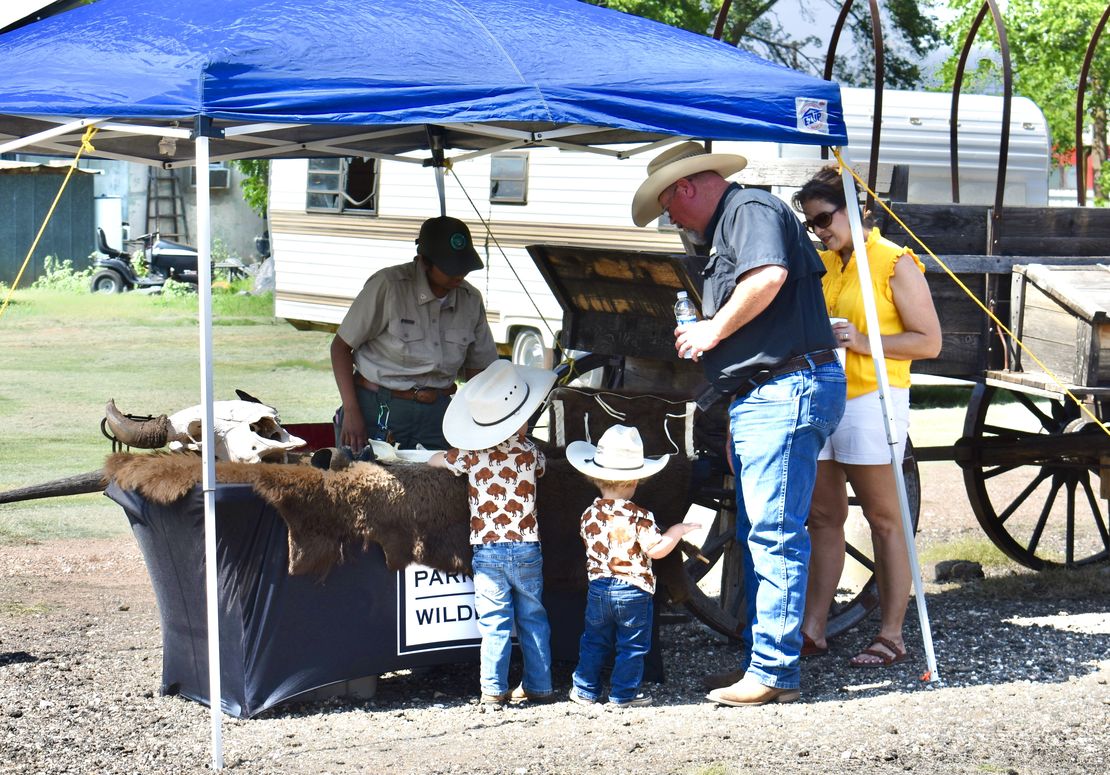
Caprock Canyons Booth

Caprock Canyons Booth
Activities new to the history festival included Mike Hannah of Amarillo, who represented the High Plains Frontier Regiment at the homesteaders' cabin with a display of historic guns that won the West. Hannah, who has been collecting for about 30 years, showcased authentic Indian beadwork, finely tanned skins, and other artifacts rarely seen.
From Shamrock Luke Lindsey, a nurse by trade but this day a reenactor of the Indian era, explained flint knapping and the materials found locally and far away. Also new was the educational spiel about bison by Juliette Garza, who works at Caprock Canyons State Park as an interpreter. Her talk attracted two cute youngsters wearing bison-design shirts who played with bison bone toys.
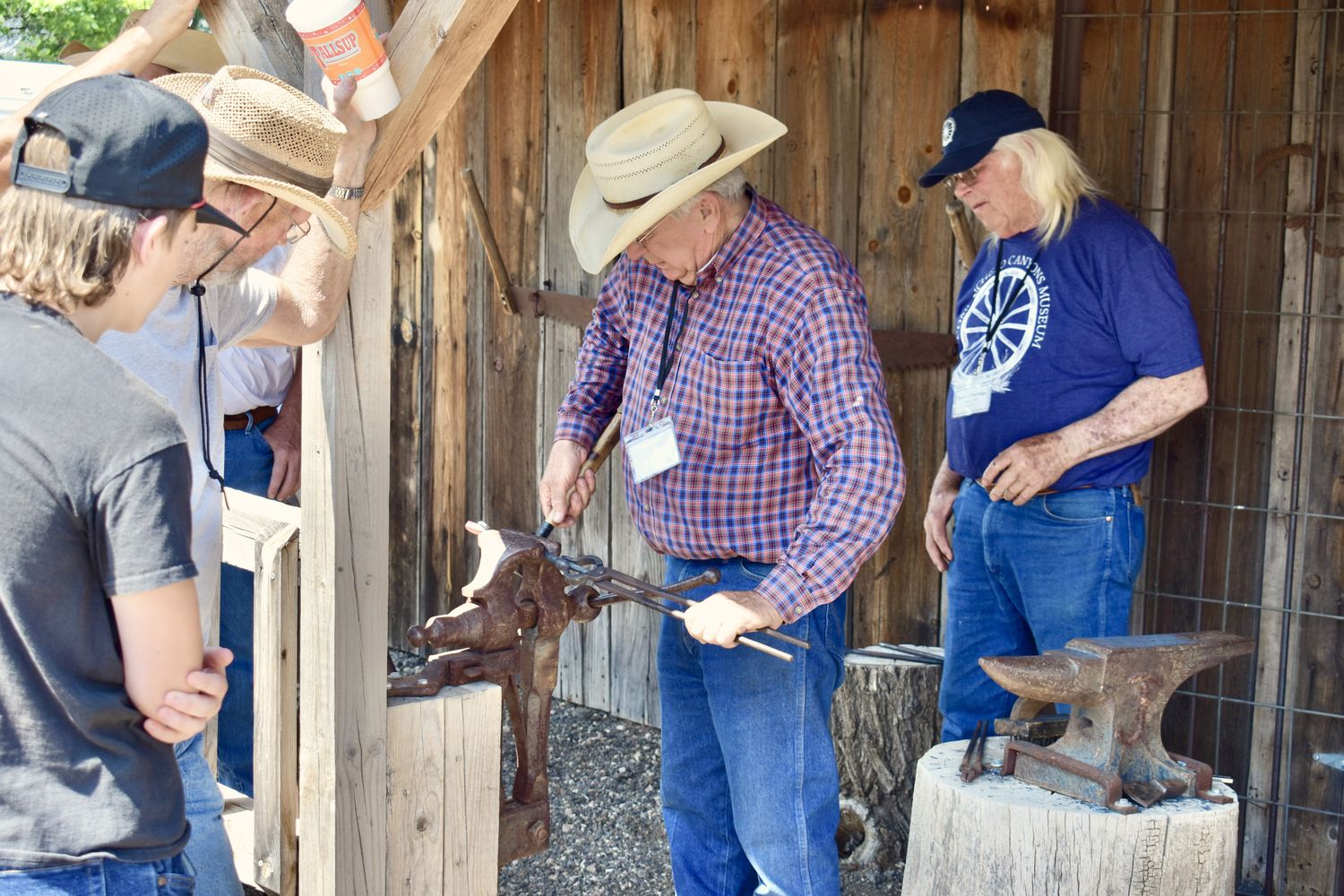
Blacksmith Shop

Blacksmith Shop
Appearing for return engagements were Cotton Elliott at the blacksmith forge, assisted by bellows operator Rusty Etheredge. Elliott explained the process of using coal while creating replicas of the museum's military tent stakes on display in the section dedicated to the Red River War of 1874.
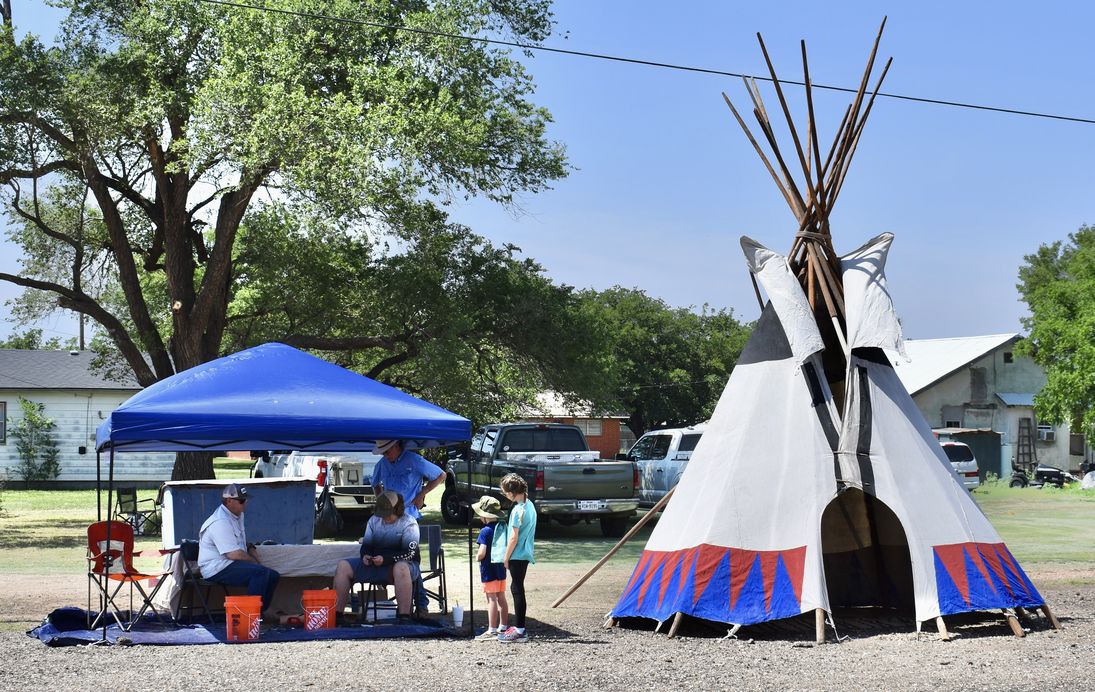
Sam's Tipi

Sam's Tipi
Getting more skill each year, Sam Montandon brought his colorful tipi setup and knapped next to it utilizing Georgetown vugs of Hill Country flint. His able assistants were his parents, Todd and Melissa Montandon of Canyon. Other very welcome guest performers Mike and Barbara Pigg were awarded the title of Supreme Ice Cream Makers for again bringing their little one-lunger John Deere motor to turn the crank for a hot-weather delight.

Todd & Sam Montandon

Todd & Sam Montandon
The honoree for the event, Dr. Paul Katz of Amarillo, is not a newcomer to the Comanchero Canyons Museum, having volunteered many times as an identifier of artifacts during the Rendezvous. The archeologist, who has also served as a museum curator of the Texas Tech Pharmacy School in Amarillo and the Square House Museum of Panhandle, served as editor for Transactions of the Southwest Federation of Archeology Societies and as past president of the Panhandle Archeology Society of Canyon.
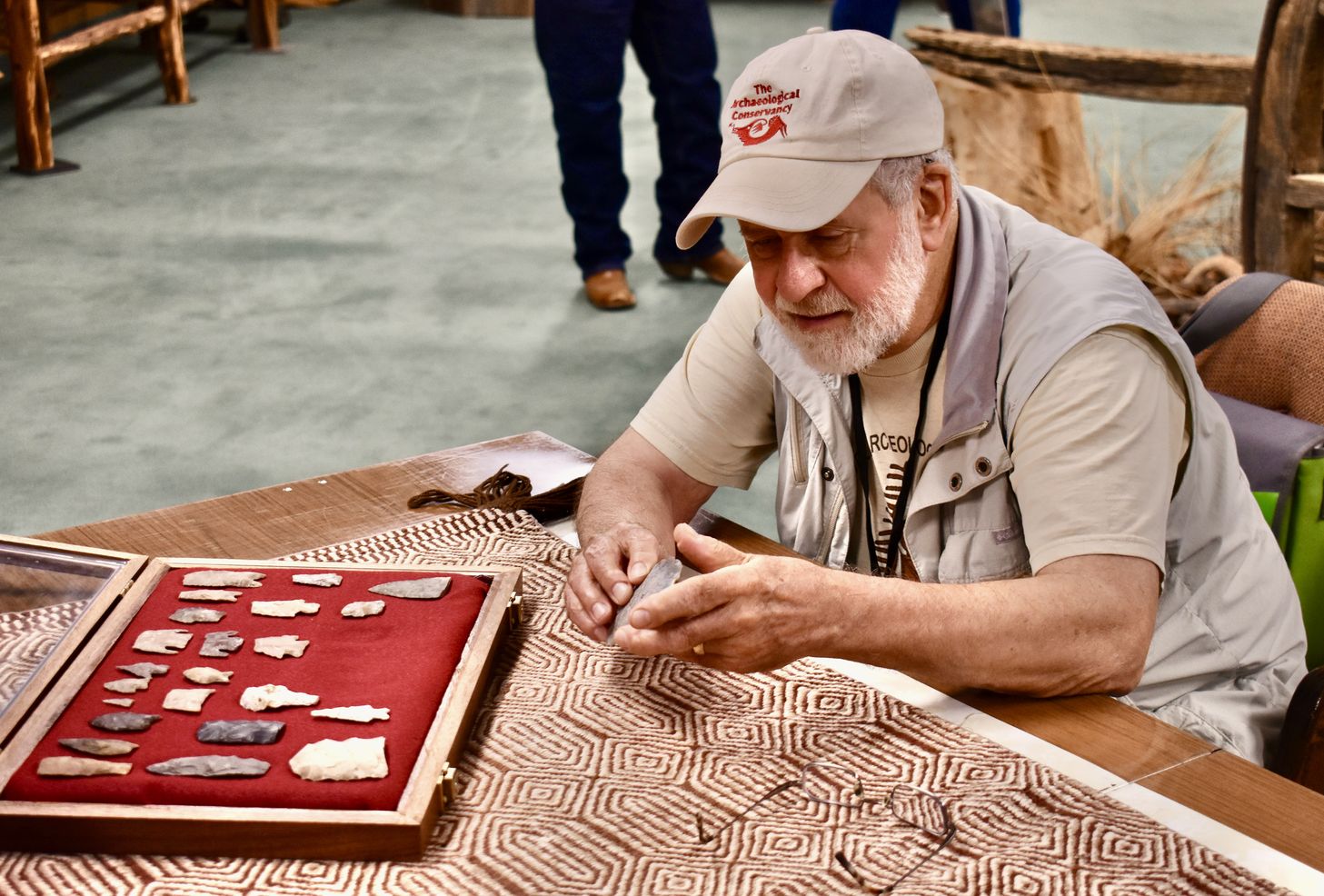
Paul Katz, Ph.D.

Paul Katz, Ph.D.
Dr. Katz recapped his experience of surveying the Lower Tule Canyon fifty years ago, which was published as "Archeological Investigations in Lower Tule Canyon, Briscoe County." During that time the Upper Tule Canyon was selected to become Mackenzie Reservoir, thereby flooding 77 archeology sites ranging from the Paleo Indian to Historic periods.
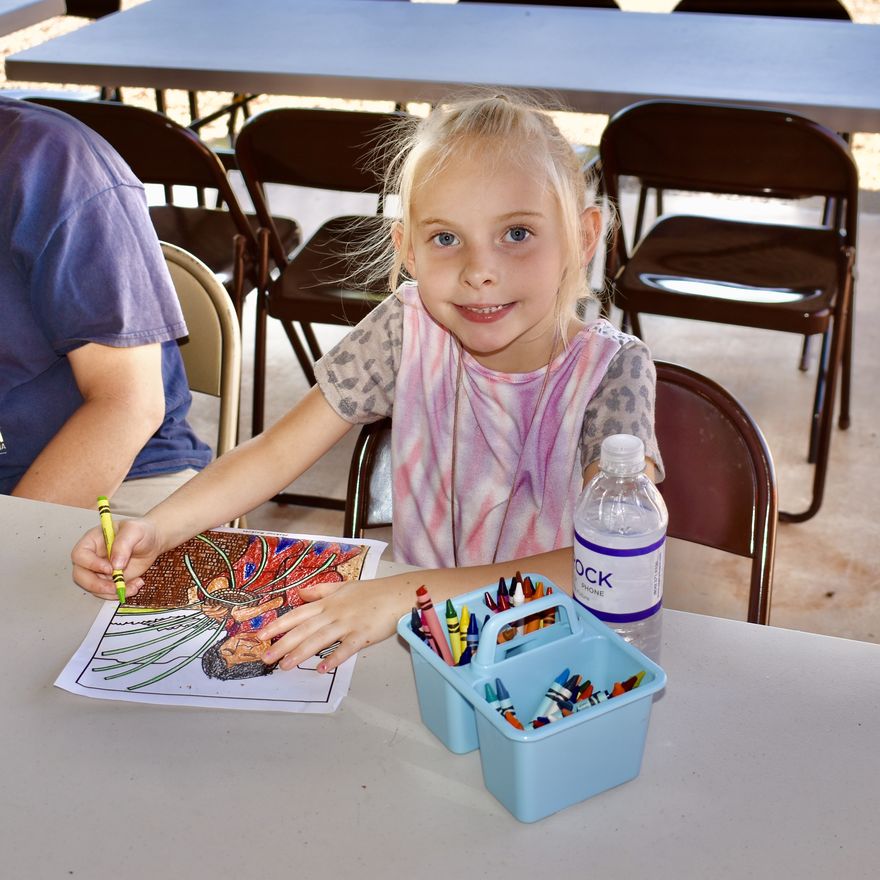
A Young Visitor

A Young Visitor
Landowners Billy and Bette Cogdell were curious about what sites might be across the highway in the Lower Tule Canyon. Grants from various organizations enabled private surveys that located 90 material remains, mostly on creek site terraces and base processing camps. Tecovas jasper, also known as Quitaque flint, predominated among artifacts on the sites, perhaps indicating that local cultural groups were hunting bison dating back to BC 2000. In the question-and-answer period, Rank Cogdell noted that the Upper Tule Creek area had better water than the gypy Lower Tule, and therefore would likely be more heavily occupied, as the data indicated.
History seekers never lack anything to talk about, and the discussions were reminders of the old days when people left their farms to go to town on Saturday evening for errands and to find out the news. Delores Pigg, 93, was perhaps the oldest to attend, and the Zach Ramseys' baby girl perhaps the youngest. A special guest was KSLR 102 FM Radio's Joe Davis, who promotes this and other local events every year as a community service.
Not enough can be said for the hardworking volunteers who made this year's Rendezvous a success. Donations made by history seekers on this day will help fund another year of operation for the small, but highly acclaimed Comanchero Canyons Museum, established and run completely by board members who often take up a hammer, a broom or a spatula.